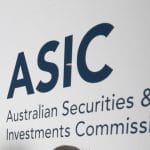ESG Investing Poses No ‘Significant’ Cost to Investors

Researchers at Arizona State University found investors “don’t lose by implementing ESG.”
(Institutional Investor) – Environmental, social, and governance investing poses little cost to investors, according to a study from researchers at Arizona State University.
In a paper titled “The Cost of ESG Investing,” ASU finance professors Laura Lindsey, Seth Pruitt, and Christoph Schiller found that even as interest in ESG mandates grows, ESG strategies have little to no impact on investment returns.
In the paper’s main analysis, the trio constructed a portfolio that generated an annualized average return of 14.6 percent. When they implemented an ESG screen, meaning they removed stocks with “bad” (or lower than median) ESG scores and created an ESG-tilted portfolio, the annualized average rate of return fell to 12.5 percent.
“It’s not statistically significant,” Pruitt told Institutional Investor.
ESG screening also had little effect on the sample portfolio’s Sharpe ratio, a metric that helps investors understand an investment’s return relative to its risk. Before the ESG screening, the portfolio’s annualized Sharpe ratio was 1.46. After bad ESG stocks are removed in the screening process, the Sharpe ratio landed at 1.52.
“The ESG-tilted portfolio is not doing significantly worse than the original portfolio, and that tells us that the cost of ESG investing is small,” Pruitt said. In this case, Pruitt said, cost means investors’ sacrifice of returns or Sharpe ratio in favor of ESG investing.
“You don’t lose by implementing ESG,” he said.
To determine the average ESG scores of assets, Pruitt and his co-authors used an amalgamation of data from four different ESG data providers. The ASU professors combined data from multiple providers because there is often disagreement among providers about the robustness of data. For example, some providers report annually while others report monthly. As a result, investors often consult different sources when determining the ESG scores of potential investments.
“Since there can be disagreement among ESG data providers and investors may consult different sources, we combine information from multiple data providers to create an ‘uncontroversial’ ESG measure, which identifies sets of companies on which the various providers generally agree,” Lindsey, Pruitt, and Schiller wrote.
With the current (and multiple) methods of calculating ESG scores, investors are unlikely to incur significant losses if they tilt their portfolios toward ESG investments. But, if ESG scoring becomes more standardized, returns of ESG-tilted portfolios could surge, Pruitt said.
That’s because if all investors tilted their portfolios to be underweight “bad” ESG stocks, those prices would fall while prices of “good” ESG stocks would rise. But, since “there is no single way of doing ESG” and there is ample disagreement among ESG data providers about what constitutes a “good” or “bad” ESG stock, investors are unlikely to underweight or overweight the same stocks, Pruitt and his colleagues wrote.
“If there is some kind of coordination from the markets or regulation, all of the investors would then punish certain stocks — the same stocks,” Pruitt said. “At that point, we would expect ESG would give rise to noticeable expected returns in the near future.”
In the near future, the likelihood of greater ESG regulation is high, according to Amy Lynch, founder and president of FrontLine Compliance, a business management consulting firm. Lynch also worked as a regulator at the U.S. Securities and Exchange Commission and the Financial Industry Regulatory Authority.
“From a regulatory perspective, I think you’re going to first see it addressed from a disclosure point of view,” Lynch told II. “The SEC will create certain requirements for public companies to standardize their reporting when it comes to ESG matters. I think that will happen in the very near future.”












